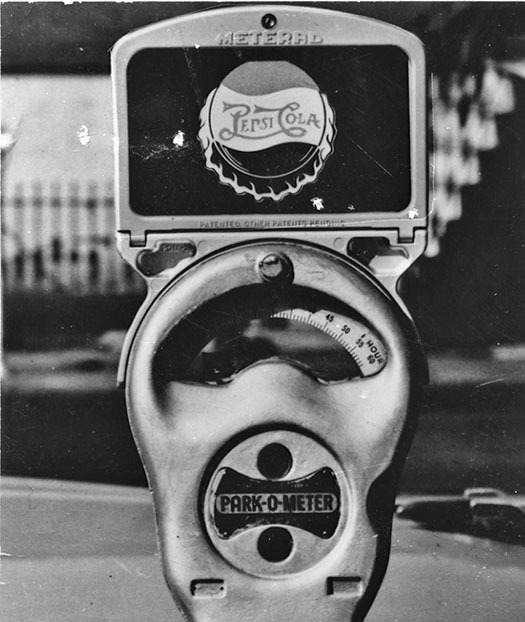
Photo by Seattle Municipal Archives on Flickr.
In the opening scene of Cool Hand Luke, the title character is cutting the tops off parking meters. He explains that it was to settle an old score, symbolizing his resentment of a society that forces him to conform to its rules. Parking meters have been a symbol of the man, a major frustration to urban drivers and the cause of more tickets than just about any other traffic violatin. But the meters were originally designed to have a positive affect on traffic flow and shopping.
So what if you discovered an invention that could wean us from our vehicles, combating suburban sprawl and making city streets less dangerous, congested, and polluted? Well, that device has been around for nearly 80 years: It’s called the parking meter.
Contrary to popular belief, the parking meter was originally designed to keep traffic moving and make more spaces available for shoppers, a measure often lauded by local businesses as much as the public who paid their hourly rates. Beginning with the first parking meter, installed in 1935 on the corner of First Street and Robinson Avenue in Oklahoma City, and spreading clear across the United States, the device was hailed as the great solution to our parking woes. Yet decades of poor meter implementation, inane off-street parking requirements, and technological stasis slowly turned our city streets into a driver’s nightmare.
Read the full article at Collector's Weekly.

